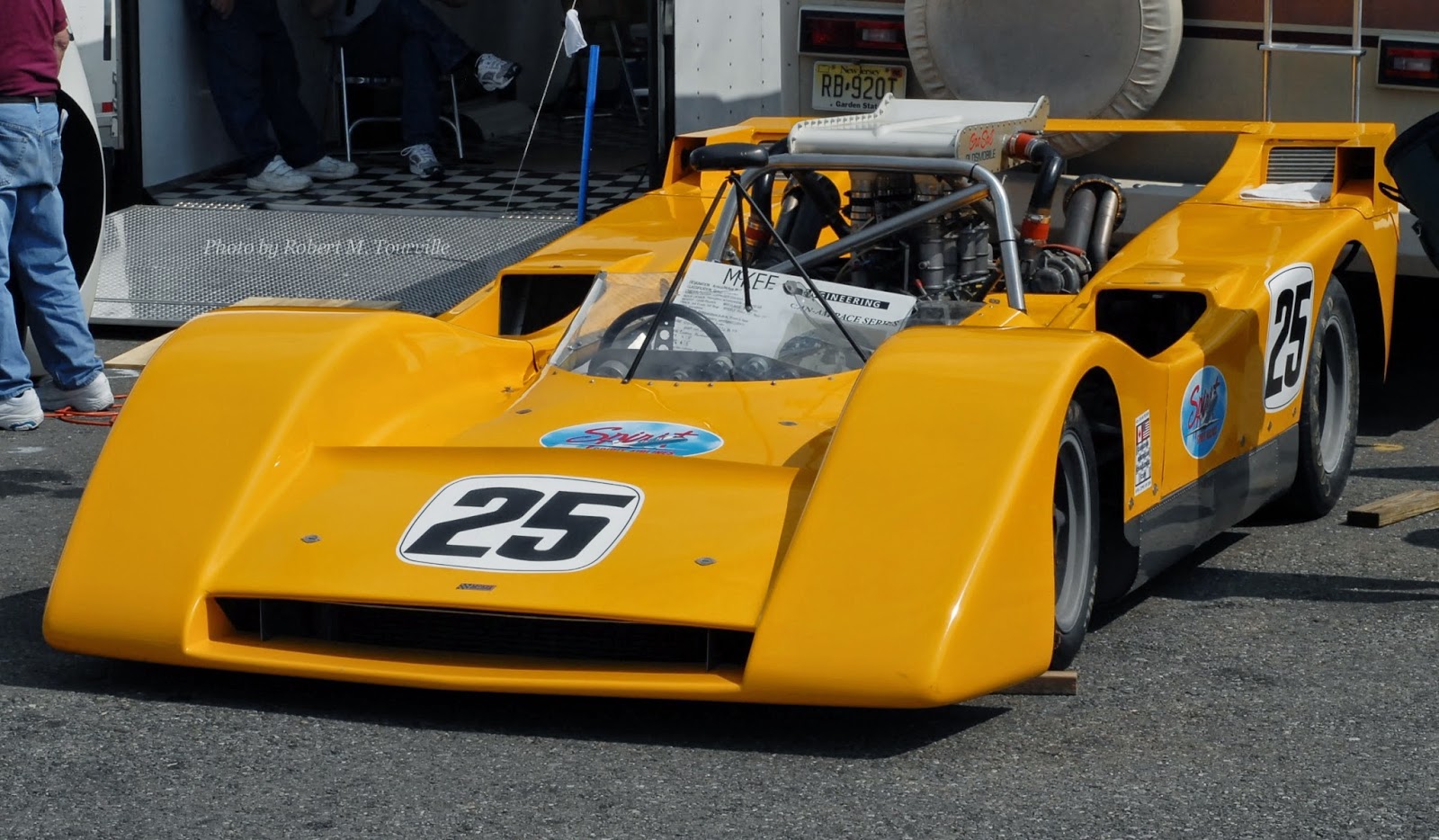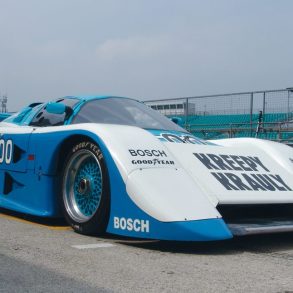Can-Am Racing Cars – The Specials
Honker II
A car named after a truck’s air horn doe not lend itself to be taken seriously but after beating the likes of Ferrari at Le Mans a battle against Lola let alone McLaren in their own back yard appeared, on paper at least to be a much smaller hill to climb.
Working with Holman & Moody with driver Mario Andretti, Ford commissioned Len Bailey at Ford’s Advanced Vehicles studio in England to design the car which Alan Mann Racing of Great Britain built. Moody who headed up Ford’s efforts in NASCAR would prepare the small-block Ford engine.
The engine would be a revised version of a small-block V8 supplied by Ford. Using Tecalemit-Jackson fuel injection the engine would be capable of producing around 600bhp. The car was painted a “Passino Purple” named after Ford Racing director, Jacques Passino.

This must have been exactly what Andretti had in mind. As far as Andretti was concerned it was a lost year. It never was a real success and according to Mario Andretti it was the worst car he has ever driven. The name of team manager Paul Newman appeared prominently on the front of the car, referring to this Mario Andretti once said: ‘Why don’t you put my name on the car and let Paul Newman drive?’. In fact Mario Andretti never did figure out why “Cool Hand Luke” would want his name on probably the worst Can-Am car ever designed. Perhaps it was the color …
Mac’s IT Special

The Yellow Macs-it car was designed and built by an an ex-Shelby American Engine builder named Jack Hoare who believed that instead of having one huge engine to provide the power, a separate engine for each wheel would give greater grip and better performance.

The cockpit of the Special had 4 tachometers for the driver to keep track of, not that anything he could do would effect one motor over another.

Interestingly Ferdinand Porsche’s 1900 Lohner-Porsche was powered by wheel-hub electric motors on the front wheels. Taxis with a Lohner-Porsche drive system were operated successfully in Berlin.
McKee Mark 14
Bob McKee began his racing career by building stock cars for Tiny Lund and as an Indy mechanic. He was of the pioneers in matching American engines to European chassis when he produced his Cooper-Buick.
T
The car first appeared on August 31, 1969 at Road America. Cro-Sal wanted to shake the car down, and if capable of qualifying, to do so, but they still felt that the car did not have enough brakes to run an entire race. Practice laps confirmed it, though acceleration and top speed were stunning. The car did not compete at this race. Meanwhile, John Beltz, Oldsmobile’s General Manager, was called to Corporate headquarters where he was told that Chevrolet was GM’s racing division and that support for the Cro-Sal entry must cease, and the car was never raced.
AVS Shadow
It was as if some drug-induced Hollywood movie producer had decided one day to produce a racing car with which he would compete in the Can-Am series for sports cars.
Trevor Harris was a freelance (unemployed) race car designer who sought to build the next world beater, a car that would take on McLaren with a lowline profile with an engine cooled by radiators cooled at the rear. A design which a precocious teenager may have come up with Harris instead, found someone who believed in his fantasies. Don Nichols an orphan who had convinced himself he was a secret agent, and was infatuated with an old radio super hero by the name of “The Shadow” wanted to do build something special. “If I wanted to be ordinary,” Nichols says, “I could have bought a McLaren.”
What we do know is that this man, of manufactured mystery had built a business in Japan as a tyre distributor, parts importer and race promoter. Having laundered his personal biography he moved to California in the 60s where he founded Advanced Vehicle Systems, Inc. True to his nature The front door of his shop was locked to discourage visitors. “If people wanted to see us,” he explains, “they dumped their business cards through the mail slot.” – Don Nichols. It was almost as if had you found out what he was doing, he’d have to kill you.
“It was the perfect project for a wild character like me,” says the car’s designer, Trevor Harris. “I was willing to go out on a limb in as many areas as you’d care to name because I knew I could pull it off. And I still think it was doable, given enough time and money. But I learned that you don’t want to incorporate too many untried technologies in one car. Don’t ever do such a crazy thing.”
The idea was to fit the largest engine in the smallest car with the lowest frontal area. A go-kart with a 675 hp engine that according to George Follmer who had the initial misfortune to “drive” the car: “was an absolute rocket-ship down the straight. But it wouldn’t stop. And it wouldn’t cool. And it bounced around like crazy because it had hardly any springs, as if the shocks had come off a Model T … basically, it was an awful car.” To torment the driver further, the footwell was so small that the driver’s feet were splayed out at a 45-degree angle. There was room for only two pedals — throttle and brake; the clutch was hand-operated.
The ridiculously small 10-inch front and 12-inch rear wheels didn’t leave much room for disk brakes and the air brakes that were supposed to supplement the car’s stopping ability and would pop out of the front fenders and rear bodywork were outlawed before the car hit the track. The special Firestone tires were of an uncompetitive compound that required astronomical pressures of 50-60psi. The original chassis twice failed to finish before being written off by a drunk in a stolen car. A second chassis was parked nine laps into its first and last race because it was undrivable in traffic, a danger to the other drivers. Perhaps the drunk had the right idea …












